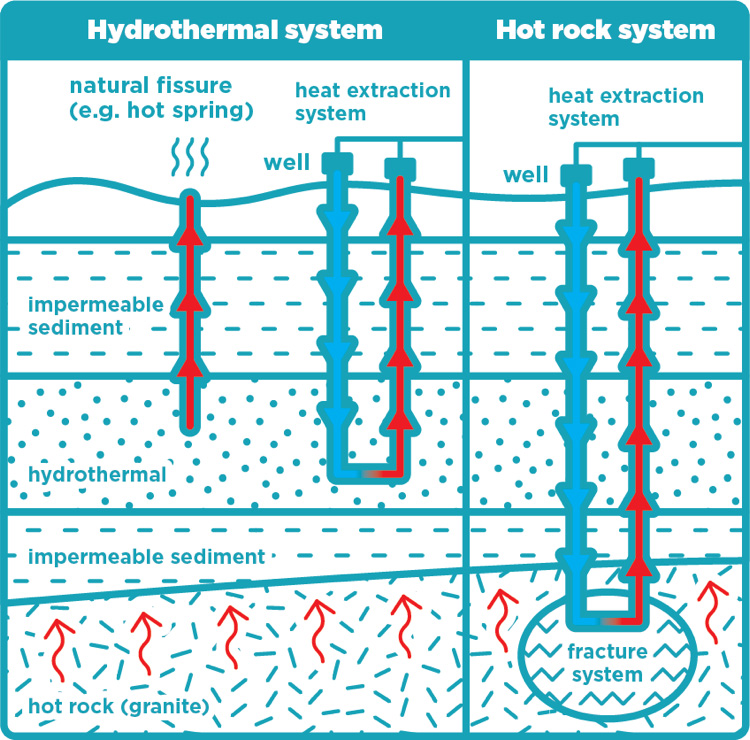What is geothermal energy?
Geothermal energy is Earth’s naturally occurring heat, which is used to generate electricity or other forms of power. There are two main sources:
- Hydrothermal systems occur when water circulates through fractures or pores in rocks where there’s high heat flow. In hydrothermal systems, water comes naturally to the surface or can be pumped.
- Hot rock systems use heat which is trapped below an impermeable layer of rock. Water is pumped from the surface into hot rock, where it is heated, and then returns to the surface.

How is geothermal energy used in NSW?
There are many areas of low temperature (<100°C) hydrothermal systems in NSW that can provide hot groundwater for heat extraction.
NSW has some naturally occurring thermal springs heated by geothermal energy. The Lightning Ridge Bore Baths, Moree Plains Artesian Pools and Yarrangobilly Caves thermal pool are popular tourist destinations.
Right now, there are no geothermal power stations in NSW, partly because there are few places in the state where accessible groundwater reaches 100°C.
However, the central and eastern parts of NSW show great potential. These areas contain granites with unusually high concentrations of uranium (U), thorium (Th) and potassium (K). Although enriched in these elements compared to other rocks, the concentrations are still relatively low and pose no health or environmental risk. These elements decay over millions of years, generating heat. These ‘hot rocks’ can be drilled and broken, to circulate water and heat it for electricity.

The future of geothermal energy in NSW
Geothermal energy could be used to heat and cool buildings, warm swimming pools, develop spas at thermal pools, pre-heat water for industrial use, and power machinery in agriculture. As technology evolves, geothermal power plants may be able to use lower-temperature water to produce electricity.